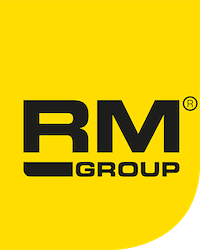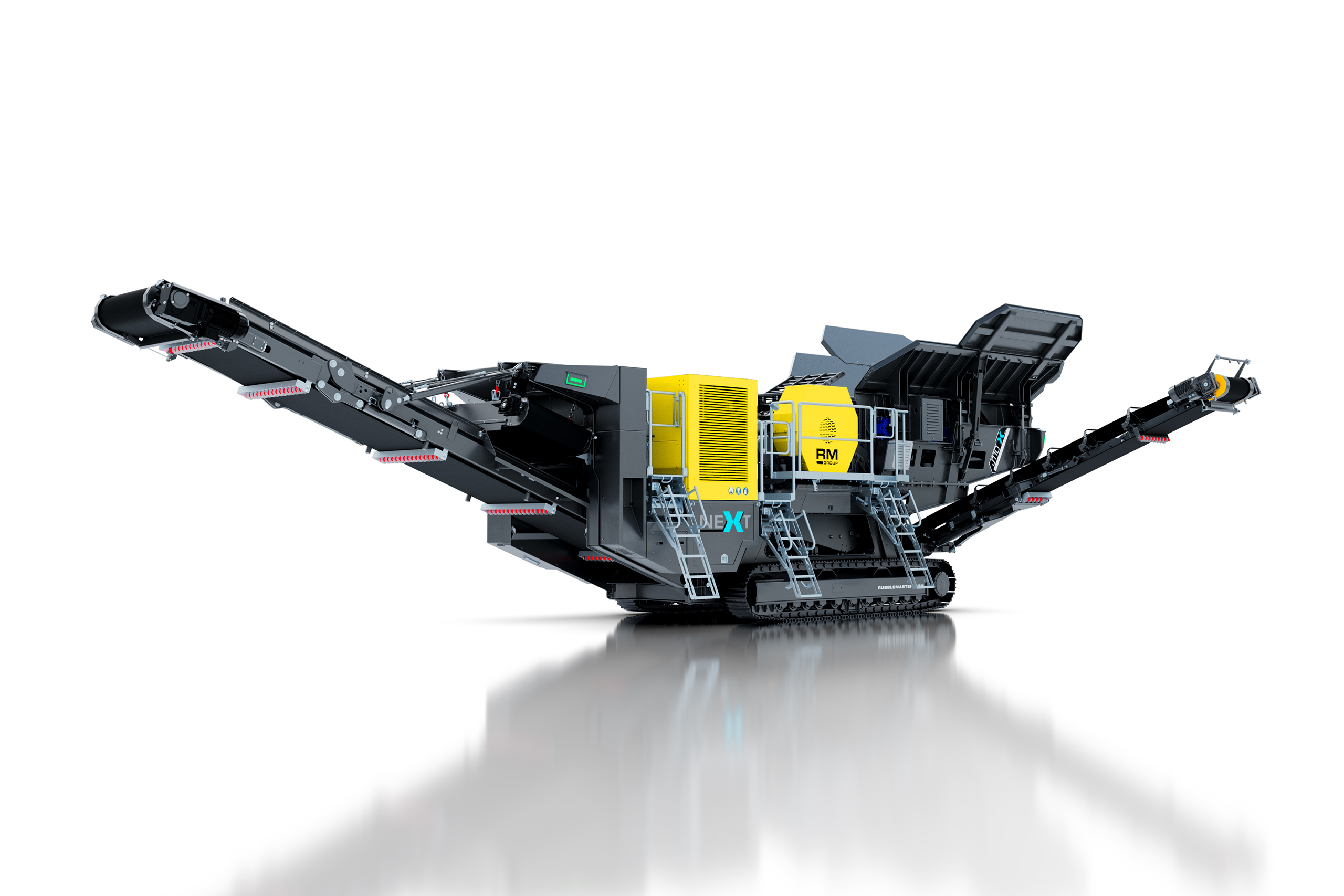
What is a Jaw Crusher?
A jaw crusher is a machine that is generally used as a primary crusher to reduce large pieces of feed material into smaller sizes. It is suitable for nearly all material types regardgardles of hardness or abrasion. Material produced from a jaw crusher can be used as an end product for some applications or used as a feed material for further reduction in a secondary crushing applications. However, the crushing process works differently from the impact crusher. The crushing process is carried out by the crushing jaws using mechanical pressure. This type of crusher is often used in the first crushing stage as a primary crusher.
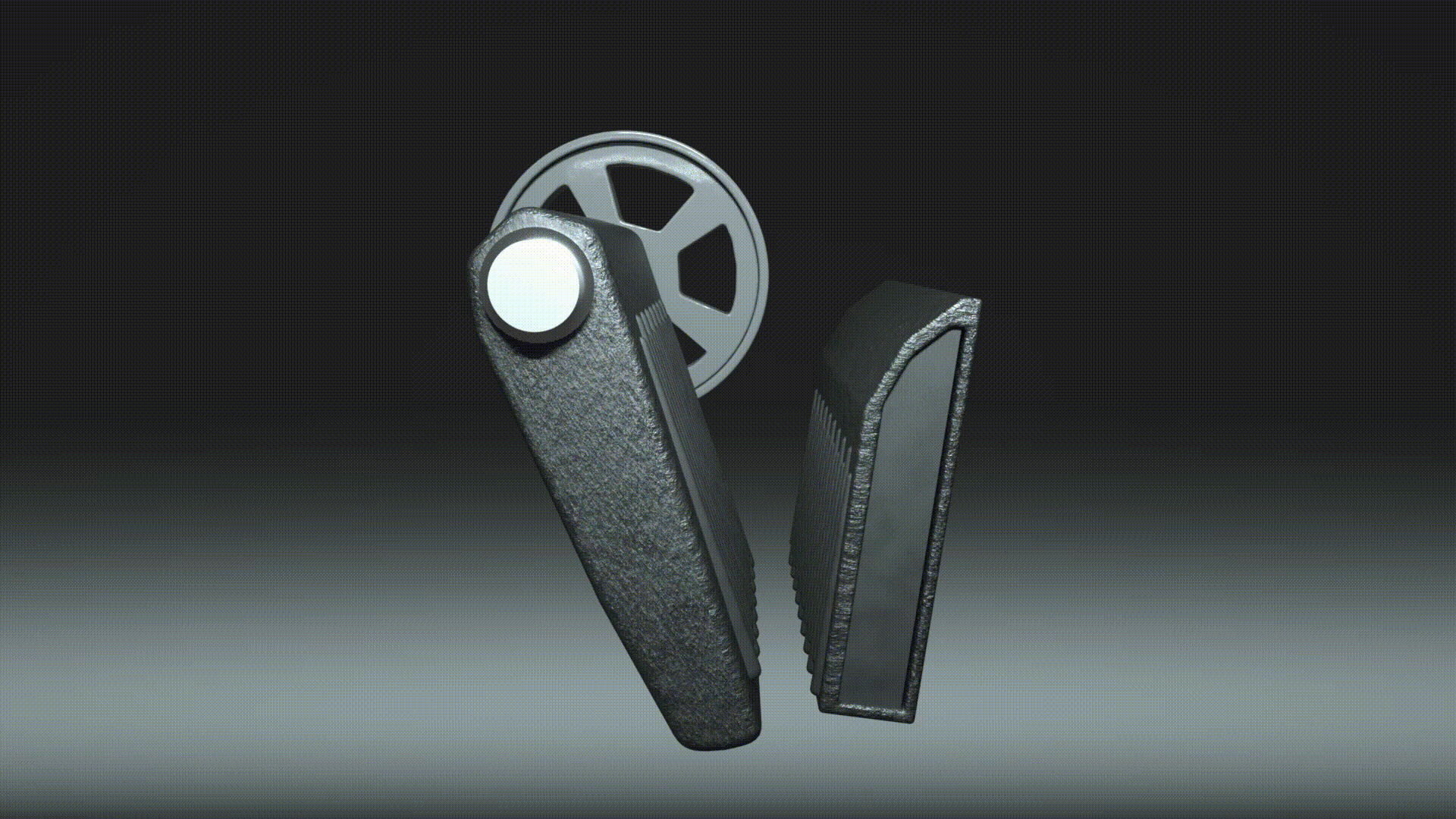
How does a single toggle Jaw Crusher work?
The jaw crusher consists of a fixed jaw plate which is mounted within the crusher mainframe and a movable jaw plate which is mounted to a jawstock. There are cheek plates mounted on the insides of the crusher to act as additional wear parts to protect the crusher mainframe.
The two jaw plates are positioned in a V-shape so that the space narrows from top to bottom. The angle within the V is known as the nip angle. An elliptical motion is created by an eccentric shaft passing through the top of the jawstock which pivots around a toggle plate at the lower half of the jawstock. This geometry turns the rotary motion of the eccentric shaft into a fore aft motion at the bottom of the jaw plate creating the crushing action.
The material is then compressed between the two jaw plates, reducing in size as it gets lower in the crushing chamber until it extits at the bottom. The output size of the material can be varied by adjusting the gap between the fixed jaw plate and moving jaw plate. This is known as the CSS (closed side setting) and is generally measured between the peak of one jaw plate and the trough of another.
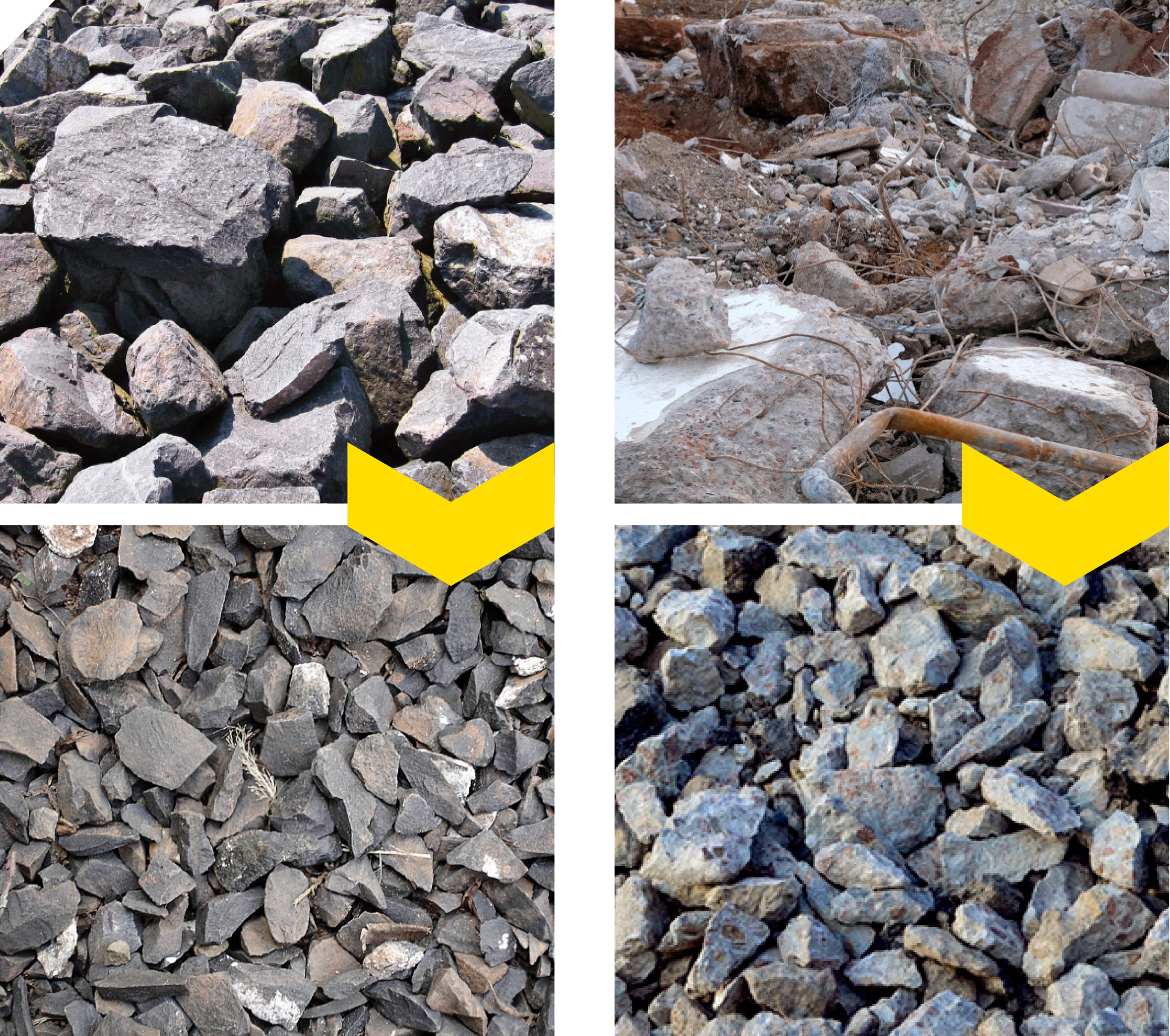
Which materials are processed by Jaw Crushers?
The jaw crusher is very versatile and can be used for almost all types of rock regardless of how tough the material is (from diorite down to dolomite) or how abrasive it is (from gabbro down to limestone).
The jaw crusher is equally suitable in recycling applications, where it is the more robust and reliable alternative when processing material with steel present in the feed.
For more on a wide variety of use cases, check out our reports.
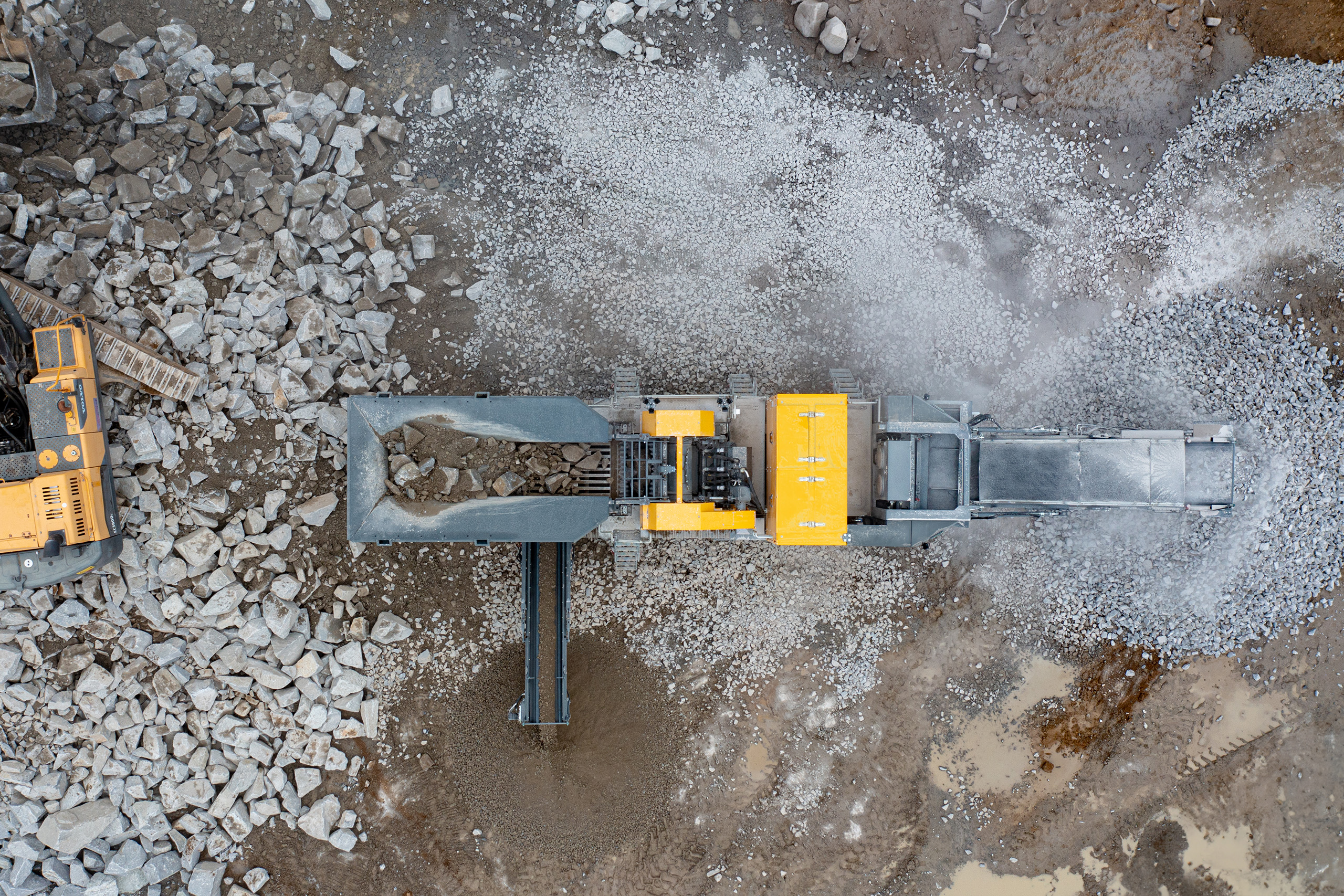
Which jobs do Jaw Crushers do best?
Jaw crushers are mainly used as primary crushers in quarries or mines for hard and medium-hard types of rock and ore. The jaw crusher allows larger pieces of material to be fed in, which often leads to a reduction in drilling and blasting costs and/or material preparation.
Usually the primary crusher is part of a set-up with several crushing stages – combined with further crushers and screens. Occasionally, however, there are also applications where the jaw crusher can produce the required end product as a stand-alone machine, i.e. without a secondary crusher. The production of road sub base material is an example, where the quality of the material is of secondary importance and very small final grain sizes are not required.
In certain conditions, it can also be advantageous to use a jaw crusher for recycling. Especially when the focus is on crushing rather than on the quality of the final aggregate.
What are the benefits of a Jaw Crusher?
The jaw crusher offers many advantages, such as its versatility, its straightforward and intuitive operation, as well as its ease of maintenance and low wear.
High performance & low costs per tonne
As the jaw crusher is a compression crusher, the jaw crusher is able to achieve a high throughput at a low cost per tonne when operated correctly.
Flexible applications
The jaw crusher is used for a wide variety of natural stone materials: soft and hard stones, highly abrasive rock, ore, and for recycling scenarios involving high proportions of rebar.
Easy maintenance & low wear
The main wear parts of the jaw crusher are its fixed jaw, moving jaw and cheek plates which can be changed easily and quickly. In contrast to impact crushers, jaw crusher wear parts have a comparatively long service life but jaw crushers cannot achieve the same reduction ratio on material.
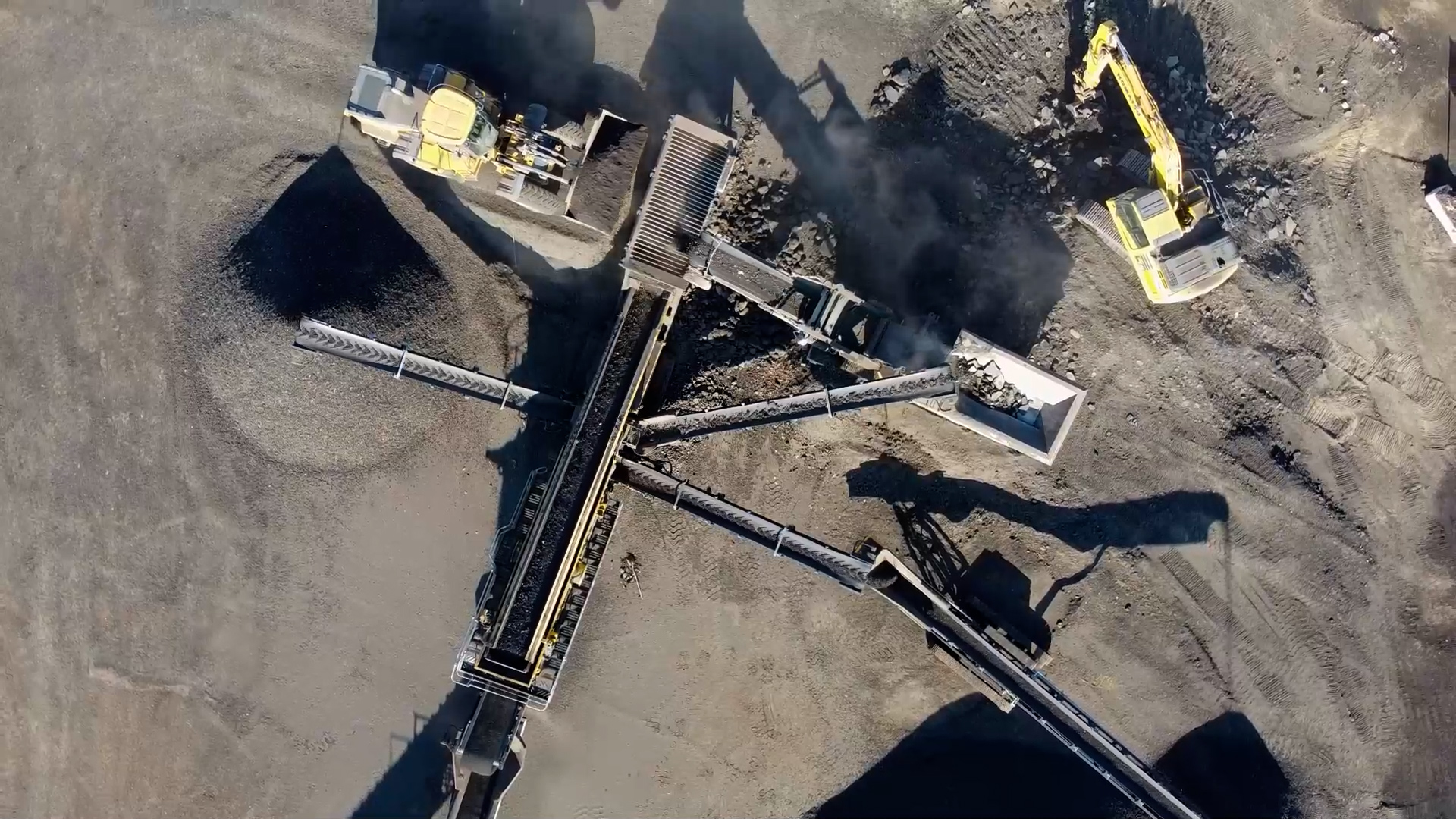
How do you integrate a Jaw Crusher into your crushing train?
Usually, the jaw crusher is used as a primary crusher during the first stage. For many applications, a further crushing process is required, because a standalone jaw crusher may not be able to produce final aggregate with the cubicity required to meet specific standards.
A combination of crushers and screens, which is called crushing train, can be configured in a variety of ways, depending on the application and specifications.
One of the most efficient solutions consists of a jaw crusher for primary crushing, followed by an impact crusher, which acts as a secondary and tertiary crusher and also guarantees a very high final aggregate quality, with a post screen to split the final aggregate into several fractions.
With this configuration, the second and third crushing stages are performed by one impact crusher – saving investment costs and a range of running costs. Other common combinations consist of a jaw crusher, cone crusher and screen, or a jaw crusher and two downstream cone crushers – to produce high quality cuboid aggregate – and a secondary screen/screens.
There are also applications where a scalper is placed in front of the jaw crusher, especially when the feed material is high in fines content. Pre screening before the jaw in these circumstances will increase throughput, prevent packing and reduce wear.
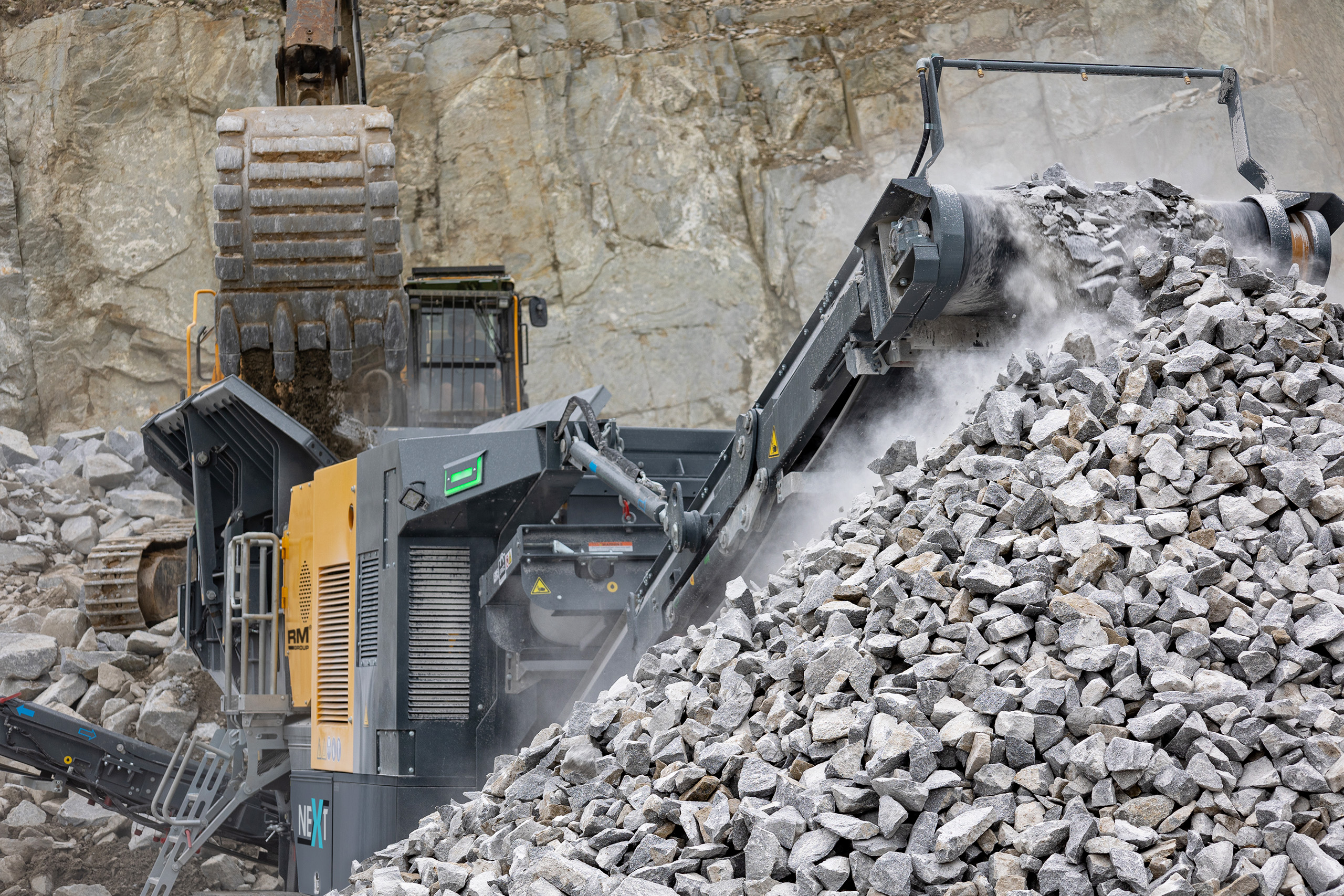
What is the difference between a Jaw Crusher and an Impact Crusher?
The main difference between jaw crushers and impact crushers is the way the material is crushed inside the crushing chamber. (compression crushing vs impact crushing)
The jaw crusher works by applying mechanical force to the material. The crushing chamber consists of a fixed jaw and a jaw that moves in an elliptical motion with a conical gap between them. The material is forced against the fixed jaw by the moving jaw, causing it to be crushed and fall down through the crushing gap. During the crushing process, very high forces act on the material at low speed.
The impact crusher, as the name suggests, works by using impact to pulverise the material. Here the material to be crushed is fed into the crushing chamber containing a high-speed rotor with hammers. The material is struck by the hammers (2-4) and flung onto the impact aprons that are fixed inside the housing. The faster the rotor turns, the higher the level of pulverisation. The material is broken down further each time it contacts the hammers and impact aprons. In addition, the rock particles colliding with each other inside the crushing box also reduces the size of the feed material until it falls through the gap between the rotor and the impact arms.
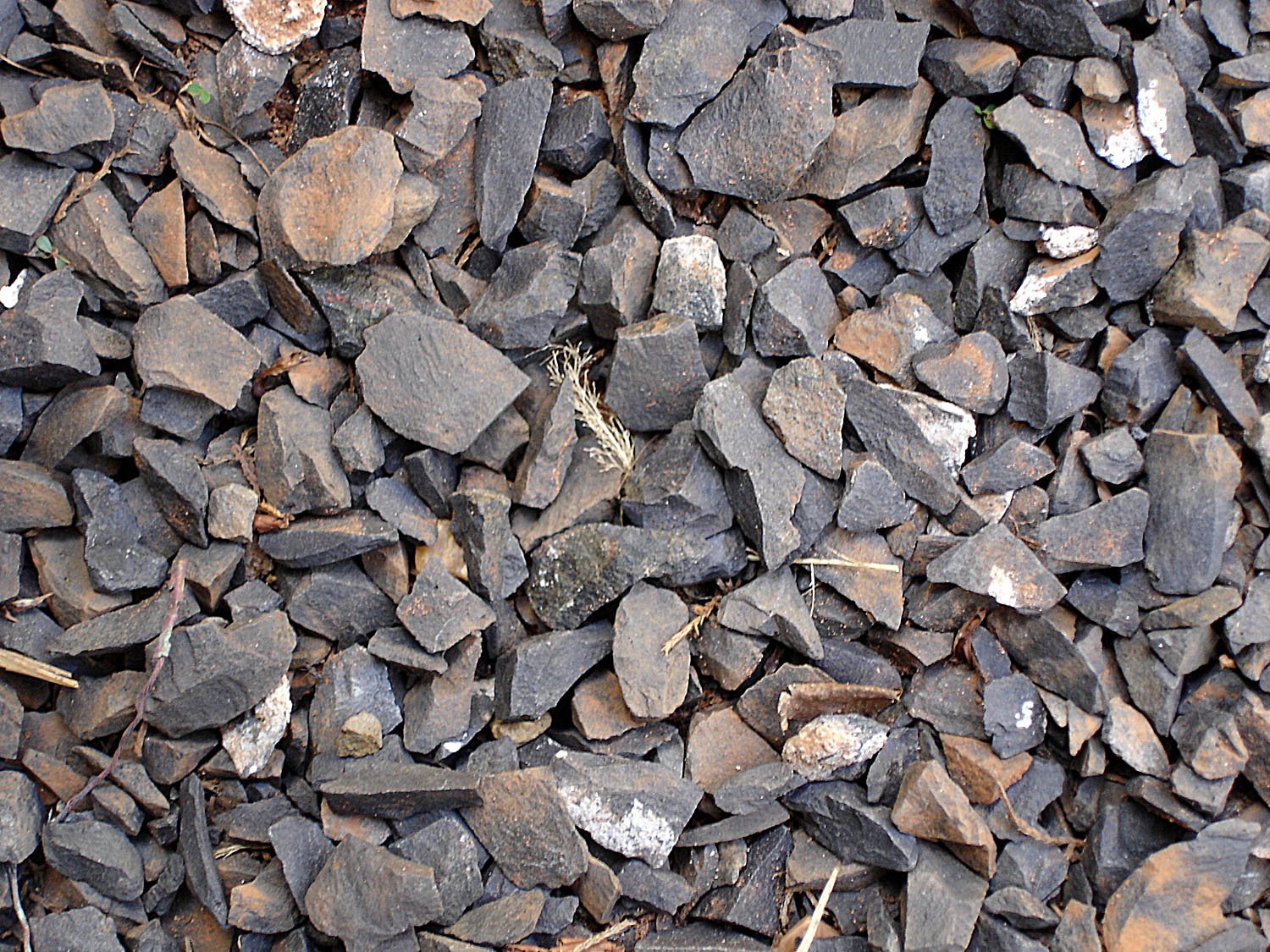
What kind of quality do Jaw Crushers achieve?
Due to the forces applied by the jaws during crushing, the material it produces is usually low quality as the material will fracture through lines of weakness. The reduction ratio of a jaw is generally a 4 to 1 one. Therefore a jaw cannot produce high volumes of small quality product. This is the reason why the jaw crusher is implemented as a primary crusher in many applications, with at least one further crushing stage downstream. The reason behind this is that the jaw crusher produces material that can readily enter a secondary crusher at the lowest cost. Plus, it produces minimal fines and therefore maximises the usability of the product for the next crushing stage.
Jaw crusher maintenance – what to look out for.
Cleanliness
- Check the oil at regular intervals to keep the oil systems free from contamination.
When changing the oil, make sure you also remove any dirt deposits in the oil tanks. If you don’t, it will contaminate the fresh oil. - Clean the breather filters and install new oil filters and seals.
- Keep the work area around the crusher clean and remove dirt deposits from the surfaces of the crusher frame.
Regular check-ups
- Observe the intervals recommended by the manufacturer for inspections.
- Every day, check the jaw plates for wear and make sure the bolts are secure.
- At regular intervals, check the cheek plates for wear and make sure the bolts are secure.
- Check the crushing gap to ensure a consistent end product.
- Change the jaw plates in good time. If they are used for too long and become too thin, it will no longer be possible to turn them over à make sure you get 100 % utilisation out of your wear parts!
General Operation
- Feed the machine with a varied production gradation where possible.
- Choke feed the crusher at all times to maximise production, reduction and control the top side of the product.
- Avoid trickle feeding the jaw as it will only wear the lower part of the jaw and jaw utilisation will be reduced.
- Avoid single sized material where possible as this will also create excessive wear in one area on the jaw plates plus reducing jaw utilisation.
- Do not heep the hopper full of material. Allow the grizzly section to remove fines prior to the jaw to increase throughput.
Contact person






